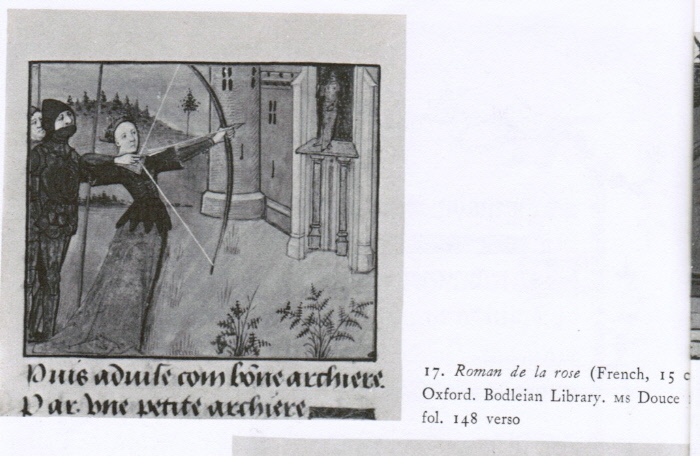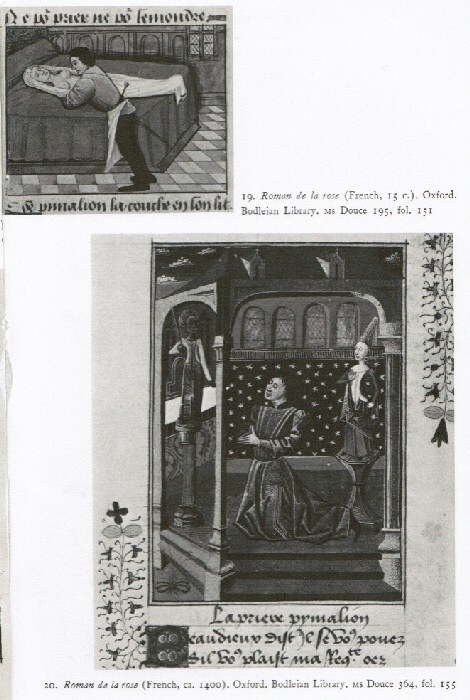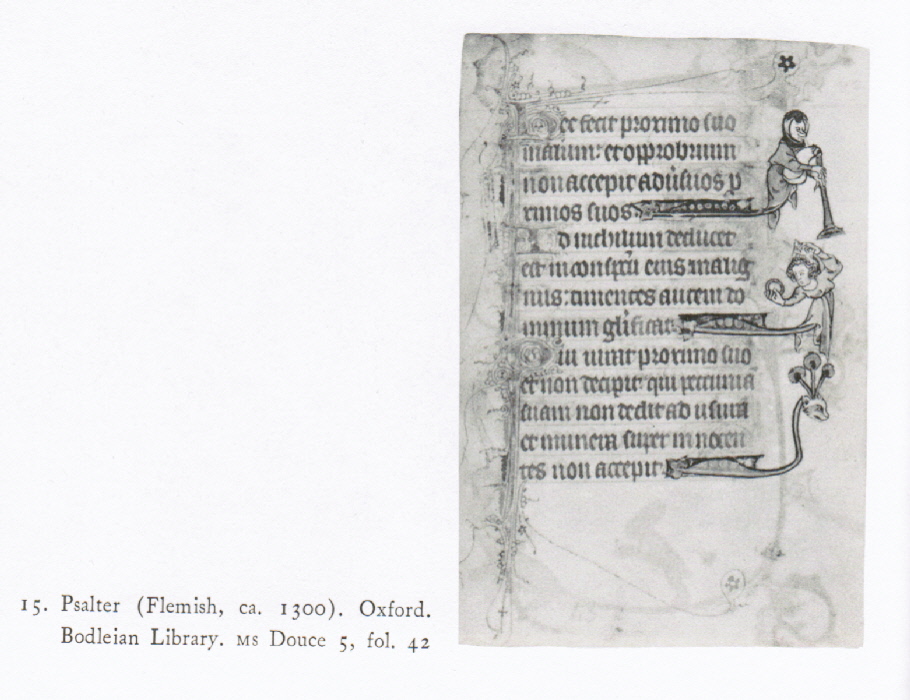The Shepherd’s Park and the Garden of Deduit…
Their Biblical Archetypes: the True Paradise and the Post-lapsarian Eden…
The Roman as an Allegory of the Fall…
Near the end of the Roman, Jean de Meun devotes several hundred lines to the description of a second garden. Within its verdant borders, the flowers are as bright and virginal as springtime; but they keep their youthful colours forever, and their beauty never fades. Indeed, one can pluck their buds morning and night, and in every season of the year. Here the Good Shepherd keeps his flock: “no mighty throng”, but only a “few”.
At lines 20279f., the poet begins to make explicit the narrative and moral significance of this episode (though the alert reader requires no authorial guidance). Whoever, he says, would compare the beauty of that garden, in which the lover saw Sir Delight and his capering minions, to the beauty of this garden, is a fool. There is no lack of abundance of beautiful flowers, birds, and streams in the Garden of Delight, to be sure; but “These things are fables, vain imaginings; no stable facts but fictions that will fade.” Like the rose, the dreamer’s Garden of Delights is another figment of his overcharged imagination. In the Shepherd’s Park, by contrast, the joys and pleasures are real and everlasting.
At its centre, beside an ever-verdant olive tree which “bears salvation’s fruit”, stands a fountain, from whose waters those sheep who are permitted to drink will gain innumerable blessings. Once they have imbibed,
no more thirst they have,
But live together as they will, nor feel
The blight of illness or the sting of death.
In lucky hour they pass within these gates;
In lucky hour they see the Lamb of God,
Whom they may follow in the narrow path,
While the Good Shepherd guards, whose only wish
Is to purvey them harborage with Him.
None who once drink from that pure stream can die.
Then, the contrast, once again, is solemnly drawn:
this is not the fountain ‘neath the tree
The Lover saw enclosed in marble verge.
He should be ridiculed who praised that spring—
The bitter, poisonous Fountain Perilous
That killed the fair Narcissus, who therein
Admired himself until he pined away.
The Lover himself was not ashamed, indeed,
To recognize and testimony give
About that fountain’s character, nor hide
Its cruelty, when he applied the name
Of Mirror Perilous to it, and said
That when he looked therein he felt a throb
Of painful grief, and heaved a heavy sigh.
You see what sweetness in the spring he found!
Fine fountain this, that makes well people ill!
When he first surveyed the Garden of Sir Pleasure through the two crystals in that fountain of self-love, the dreamer saw only illusions and fantasies. But in the fountain in the Shepherd’s Park,
Always, from whatsoever side [one] looks,
[He] sees all things contained within the park
And recognizes each for what it is,
And ever knows its worth. He who has seen
Himself reflected there at once becomes
So wise a master that he nevermore
Can be deceived by aught that may occur.
The section then concludes with the poet’s question to his readers:
What think you of this park that I’ve described
And of the Lover’s garden? Tell me, lords.
On accident and substance give your votes
And reasonable verdict. By your faith
Declare which seems to you more beautiful.
Consider the two fountains, and decide
Which furnishes the more health-giving stream
And water the more pure and virtuous.
Judging the nature of the conduits,
Say which is more praiseworthy. Judge the pine
And olive which o’ershade the living streams;…
That sooner an agreement you may reach
I’ll briefly summarize what I have said
About the fountains’ virtues and true worth:
The one intoxicates a living man
And brings him to his death; whereas, in truth,
The dead are by the other spring revived.
The moral force of Jean de Meun’s antinomies depends, of course, upon their biblical referents, which no medieval reader could fail to recognize beneath the surface of the allegory. Deduit’s garden is a garden of earthly delights, a parody of the Edenic Paradise, or rather, an image of Eden corrupted by the Fall. The Shepherd’s Park is the True Eden, the heavenly Paradise regenerated from the dead and sin-laden desert of human history by Christ’s Sacrifice. The dreamer’s false paradise of carnal and sensible delights is inhabited by a throng of revelers; the Shepherd’s Park is home to the elect few, the virtuous and wise who can distinguish reality from appearance and find their happiness in the pursuit of the eternal and invisible things of God. Related to this is the image of the “narrow” path and gate that lead to the Shepherd’s Park, a commonplace allusion to the famous verses (7:13-14) from Matthew:
Enter ye in at the strait gate: for wide is the gate and broad is the way, the leadeth to destruction, and many there be which go in thereat:
Because strait is the gate and narrow is the way, which leadeth into life, and few there be that find it.
The pine in Deduit’s garden is, plainly enough, a type of the Tree of Knowledge; conversely in the Shepherd’s Park, the olive that “bears salvation’s fruit” recalls the Tree of Life, whose pendant fruit is Christ crucified upon that Tree in the form of the Cross. The two fountains, similarly, have their antitypes in the Fountains of Death and Life that traditionally belong to the iconography of the biblical Eden.
The Roman de la Rose is thus, like so many other medieval narratives, a grand allegory of the Fall, whose three-stage process, as re-actualized in every subsequent act of sin (and especially the passio of lust), we have already discussed at length. Such underlying image-complexes and ideas, with which every medieval reader was familiar, aggrandize an otherwise trivial, if not puerile theme, into a universal human and literary context. Though I trust that the Roman’s moral irony and satirical humour are readily appreciated on their own, a modern reader’s enjoyment and understanding of such texts can only be enriched by his awareness of these allegorical traditions.




